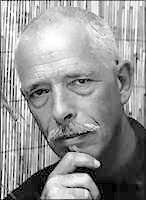|
Dedication To
that part of my sister Kate Introduction
My name is John Carder Bush. My father comes from rural Essex, and my mother comes from County Waterford. I have a brother eight years younger than me and his name is Patrick, and I have a sister fourteen years younger than me, her name was Cathy. She is famous now, and her name is Kate. Much has changed since these photographs were taken, some almost twenty years ago, and we in her family have changed. The sudden introduction of fame into a human unit forces decision and action, and they change people. But still in the photographs is the "now" as well, and for those that know the later images of Kate there is much to recognize. The photographs were not meant for any purpose, for me they were just a way of realizing the emotional observations that charged around my head at the time. Our lives were filled with the trappings of the Celtic Twilight, its poetry and its music. The Pre-Raphaelites and the turn of the century book illustrators were an obsession for me long before the fashion machine born in the sixties plastered Beardley all over Europe, the Brotherhood into every home. So a lot of the moods in this book are a conscious attempt to find that fascination by way of my camera. Most of the indoor poses were taken inside a Victorian Wash House where women once sweated over boiling coppers, stirring and untangling linen sheets and Egyptian cotton. Much later it became a place to rehearse my folk band with Cathy joining in on the choruses of Naval smut - her generation is so much freer of inhibition. Then it was used as a "dojo", a Way-place for practicing Karate where we would emerge from the hell and peace of the Martial Arts, the anger washed out, the love crisp and clean like sheets on a summer line. Next it became a place for Cathy to try out her music. So it always seems to have been a place where things were processed and prepared for the outside. The stone flagged
floor often had straw on it. Straw for the pet Most of the costumes she is wearing came from jumble sales and were many sizes too big for her. Under the costumes is my eight year old sister, companionable little friend, loved by us all who was absorbing it all through her quiet, unobtrusive intelligence. Still at the age when she believed that Gandalf lived in a rock garden in Old Bexley, in love with her pets and just beginning to discover that lonely world of self-to-be. The finding and arranging of each negative has changed my perspective of that part of the past. My memory tells me that certain events happened at a certain point in time - the printed photograph often shows me an inaccuracy in my recall that I fight against accepting; after all, the memory has been unchallenged for many years. But in the face of my disbelief the photo must win. Even with a detailed diary so much is left out; a photograph gives more in a moment and then offers all the tidbits of detail - fences that have gone, walls that have been painted, animals that are dead, people that have grown up. The memory grabs for them like something starved. Some of the photos I do not remember taking but I know that I did, so there is confusion and mistrust as well. The generations that have come since the Second World War are privileged in that many of us have our lives recorded on snaps, 8mm movie and now videotape, so that the processes in our growing up, and then down, are there for us to see, like a long and colourful flick-book. We dive into it for a bolt of nostalgia and come out puzzled and often unhappy from the changes we have seen. It is definitely a habit with a sharp edge to it; not to be reminded so vividly of the past must be a calmer path to growing. In photographs the child stays with us all the way to the end, the images of things of comfort, long broken and dumped, tweak the tear glands for a tiny shower of sadness; the seagull hangs for a moment over the setting sun and regret bites a bit more out of the heart. There are many
other photos of Cathy, small imprints with glue on their backs, precious
cracked vignettes of a moment that acts as a catalyst between now and then
for the person who treasures them. I have not included them here: most of
the selection in this book were "made", time was put aside for them rather
than they were taken out of time. This may give them an emotional harmony,
if anything a slant of sorrow, that I like. But they are not necessarily
fair as a scan of the ways and moods of a little girl; there was a great
deal of laughter and fun in her life but at that time it did not attract
me photographically as much as the wistful quiet that can make us move out
towards it. |
